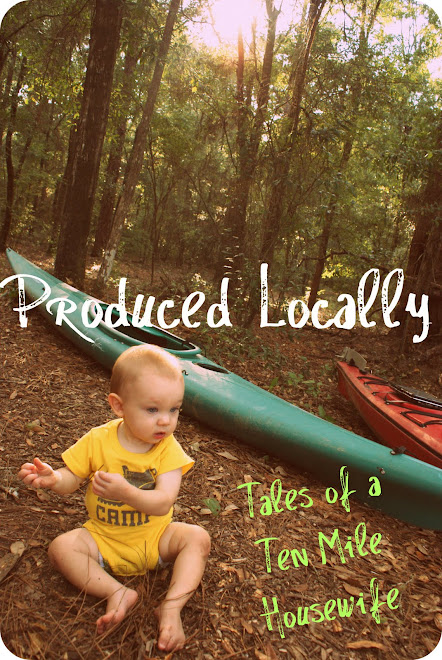Well, we received alright. A swift kick in the reality rear, delivered by:
Holy cow.
If you haven't seen it, you need to. Not so you can jump on some radical activist bandwagon or become president of PETA, rather so you can be informed, for your health and your family's health. How do we, as a country on the whole, not know or care what we put in our bodies at least three times a day, every single day? Blows my mind.
Here are a few things the film has me thinking about:
- Did you know that there is ammonia in most of the beef you consume? Yes, a "meat filler" is doused in ammonia and then added to the beef to help reduce the risk of E.coli. And why is there a rise (73,000 cases in 2007) in E.coli ? Because the cows are overcrowded into small confinements where they spend most of their time "knee deep" in their own waste, are corn-fed, not grass-fed, which increases the risk of the virus because their digestive systems aren't producing what it needs to fight off the bacteria. Nice.
- Corn is in everything. EVERYTHING. Thirty percent of the land in the United States is used for mass corn production. Corn products include, but not limited to: ketchup, cheese, Twinkies, batteries, peanut butter, Cheez-Its, salad dressings, Coke, jelly, Sweet & Low, syrup, juice,
Kool-Aid, charcoal, diapers, Motrin, meat and fast food. Even better. - Seventy percent of processed foods have some genetically modified ingredient. There are approximately 47,000 products found in an American supermarket, most of which are made by a few companies. Awesome.
- In the largest slaughter house in the country located in North Carolina, 32,000 pigs are sent to their death each day. EACH DAY. Most of the workers there are immigrants from Mexico that are bussed in daily from a 100-mile radius...and the company has an agreement with the government to turn them over for immigration violations, fifteen per day. This is the thanks they get for slinging bacteria-ridden pork for you and me to consume for the past fifteen years. Sweet.
- And this one absolutely makes my skin crawl: In 1972, the FDA conducted 50,000 food safety inspections. In 2006, the FDA conducted only 9,164. In 1998, the USDA implemented microbial testing for salmonella and E.coli 0157h7 so that if a plant repeatedly failed these tests, the USDA could
shut down the plant. After being taken to court by the meat and poultry associations, the USDA no longer has that power. Yep, that's right. Keep on cranking out that bacteria, big meat companies, we can't stop you. Are you kidding me? - How are the farmers fairing these days, being "owned" by the big man? The average chicken farmer invests over $500,000 and makes only $18,000 a year, making it next to impossible to break free from the "man". And that's only if their contracts aren't terminated for things like refusing to build chicken houses where the birds literally never see the light of day. Then what? Farming, the backbone of our country's short history quickly dies to mass-production meat and produce factories. Heartbreaking.
As the title of this post mentions, this is Part One. Keep checking back for what Chris and I plan to do to change our habits and routine. I will tell you this much, I have been all over the web this morning researching local beef and chicken farms. After we consume what's in our fridge, as to not be wasteful, we will no longer turn a blind eye to the source of our meat. It will cost more financially, but so worth it in the long run.
I may not be able to have Bessie in the backyard, but I will come as close as I can. I can maybe finagle a chicken or two for fresh eggs...
As anyone semi-local interested in going in on a local, grass-fed heifer? They run about $600 - 800 for a whole cow, approximately $4/lb...
These facts are all taken from the Press Materials for the Food, Inc Movie, directed by Robert Kenner.


I try not to eat pig. There is a reason God told the Israelites not to eat it: it has a higher amount of bad bacteria than other meats.
ReplyDeleteI kind of picked up on that with the "kosher" comments. I rarely eat pig as it is... occasionally bacon and I don't really like pork or ham. (I had to think really hard just then about the meats that belong to swine...)
ReplyDeleteAnd now, I really will be more piggy, I mean, picky...